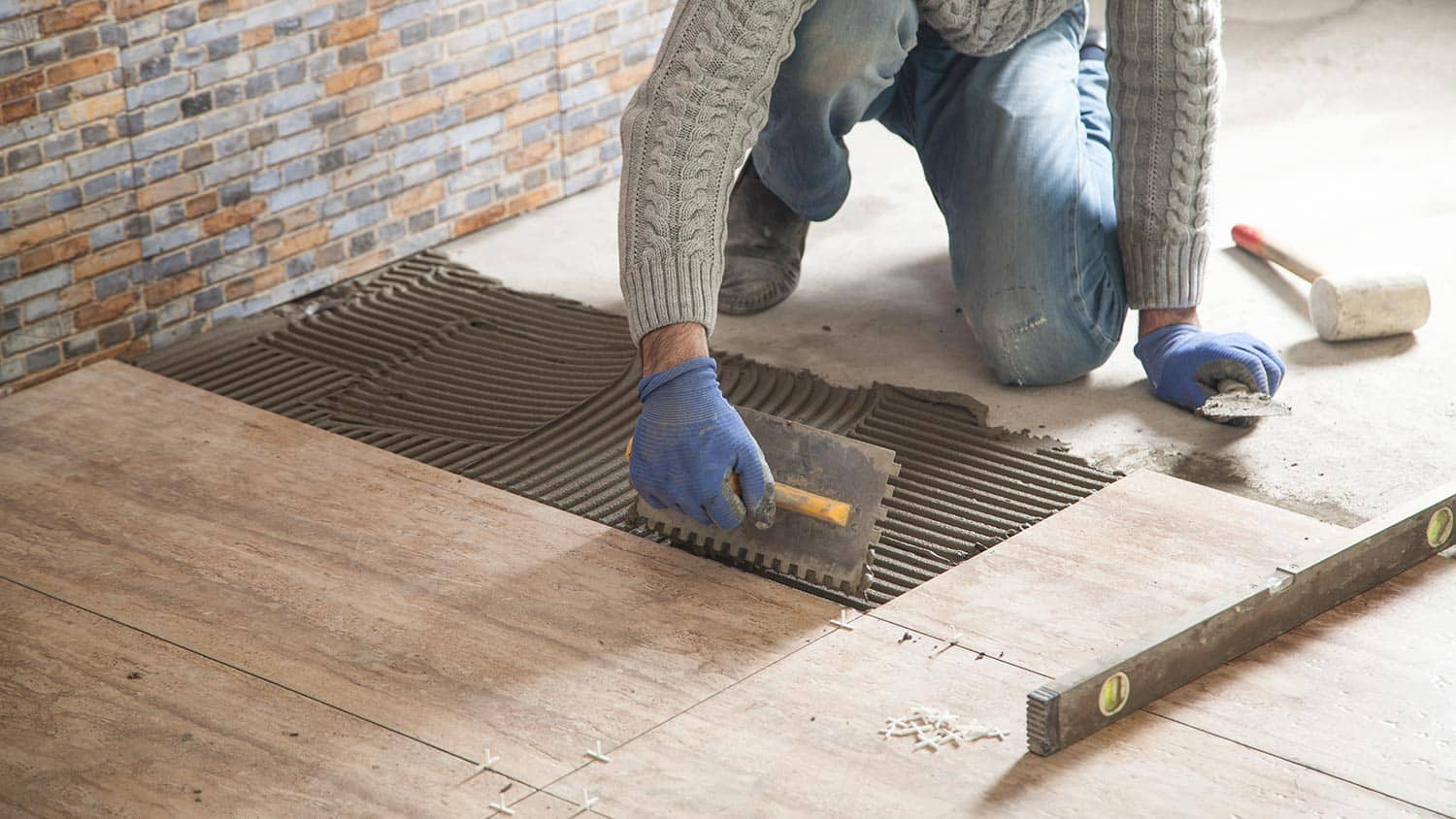Discover the Tricks to Perfect Floor Tile Installment Whenever
Mastering the art of tile setup includes a collection of accurate actions and strategies that, when executed correctly, can result in a seamless and sleek surface. By recognizing the keys behind each step, you can ensure that your tile setup not just fulfills yet surpasses your assumptions.
Correct Surface Prep Work
Efficient floor tile setup hinges dramatically on careful surface area preparation to ensure a perfect end result. Prior to laying tiles, it is essential to assess the substratum's problem completely. The surface must be clean, dry, and structurally sound to avoid future concerns such as loose ceramic tiles or split grout. Any existing flooring material, adhesives, or sealers ought to be eliminated to create a consistent base for the brand-new tiles.
To assure appropriate bond, it is recommended to roughen smooth surface areas via sanding or scarifying. Additionally, using a primer can boost bonding between the floor tile and the substrate adhesive. Uneven surfaces ought to be leveled utilizing a self-leveling compound to avoid lippage and ensure a smooth surface.
Additionally, checking for possible resources of moisture is vital, as excess wetness can cause mold and mildew growth and damage the ceramic tiles over time. Using a dampness barrier or waterproofing membrane layer in wet areas like cooking areas or shower rooms is necessary to shield the floor tiles from water damage. By diligently preparing the surface before tile setup, one can produce a resilient and visually attractive tiled area that will certainly stand the test of time.

Picking the Right Adhesive
Selecting the suitable adhesive is an important action in ensuring the successful installation of tiles. The kind of adhesive you select will certainly depend upon different aspects such as the type of ceramic tile, the substrate material, and the location of the setup. There are different kinds of adhesives offered out there, including thin-set mortar, mastic, and epoxy.

Epoxy adhesives are waterproof and very sturdy, making them ideal for locations prone to moisture such as kitchens or bathrooms. They are likewise appropriate for setting up glass or steel ceramic tiles. When selecting an adhesive, make certain to adhere to the producer's referrals and consider the certain needs of your tile setup job.
Accuracy Reducing Methods
One of the most typical tools utilized for accuracy cutting in floor tile installation is the tile cutter. Tile cutters come in various types, including hand-operated basics ceramic tile cutters, electric wet saws, and portable floor tile cutters. Hands-on ceramic tile you can check here cutters are ideal for straight cuts on ceramic and porcelain floor tiles, offering clean and precise edges.
Furthermore, using devices like ceramic tile scribes or glass cutters can aid in scoring and snapping floor tiles with precision. By mastering these precision cutting techniques, tile installers can ensure a professional finish and an aesthetically appealing result in their ceramic tile projects.

Grout Application Tips
When transitioning from precision reducing techniques to grout application in floor tile installation, attention to information and technique is critical for accomplishing a remarkable surface. Grout serves not just as a useful element that fills up the spaces between floor tiles however additionally plays a significant role in the general visual of the setup.
When applying grout, job in small sections at a time to prevent it from drying as well promptly. Make use of a rubber float to push the grout right into the joints at a 45-degree angle, guaranteeing full protection and condensing the product. When the cement is applied, use a wet sponge to clean up the floor tiles, ensuring not to eliminate grout from the joints. Ultimately, buff the tiles with a dry fabric to eliminate any type of haze and achieve a sleek coating. Adhering to these grout application ideas will certainly cause a skillfully set up floor tile surface that boosts the elegance of any kind of space.
Completing Touches and Maintenance
To complete the tile installment task successfully, interest to information during the completing touches and normal maintenance is important. After the grout has dried and the ceramic tiles are securely in place, the last steps entail making see post sure that all sides are correctly secured.
Routine upkeep is essential to maintaining the beauty and capability of your tiled surfaces. A basic routine of sweeping or vacuuming followed by wiping with a mild cleanser can aid keep your floor tiles looking excellent (tile installation austin). For areas that are regularly revealed to dampness, such as cooking areas or bathrooms, normal resealing of grout lines is advised to avoid mold and mildew and mold growth
Verdict
Finally, attaining ideal ceramic tile installation every time calls for attention to detail and proper methods. By concentrating on surface area prep work, picking the correct adhesive, using accuracy reducing methods, using grout very carefully, and finishing with attention to detail, you can make sure a professional-looking result. Bear in mind to adhere to these actions and maintain your tiles routinely to lengthen their lifespan and maintain them looking their best.
One of the most common devices used for precision cutting in floor tile setup is the ceramic tile cutter. Tile cutters come in numerous kinds, including hand-operated ceramic tile cutters, electric damp saws, and handheld tile cutters. Hands-on tile cutters are appropriate for straight cuts on ceramic and porcelain ceramic tiles, supplying accurate and tidy sides. Furthermore, using devices like tile scribes or glass cutters can aid in racking up and breaking floor tiles with precision. By grasping these precision cutting methods, tile installers can ensure a professional finish and a visually appealing result in their floor tile jobs.